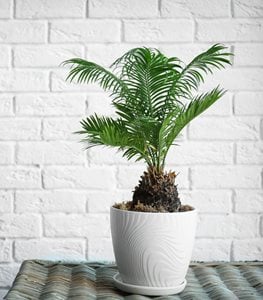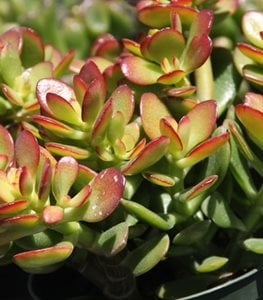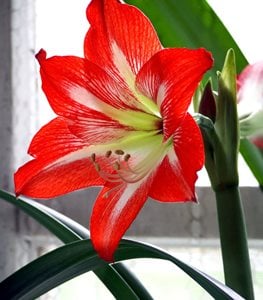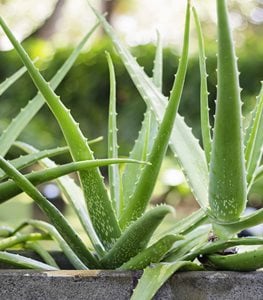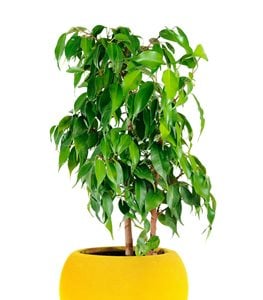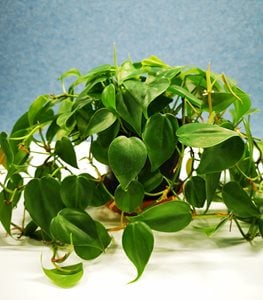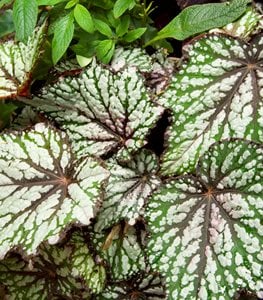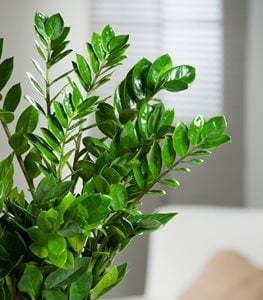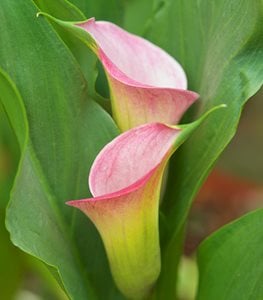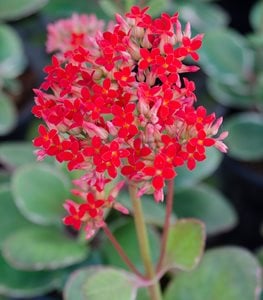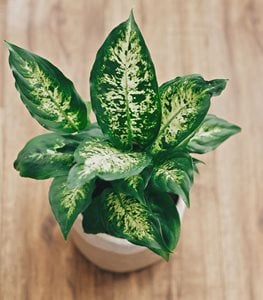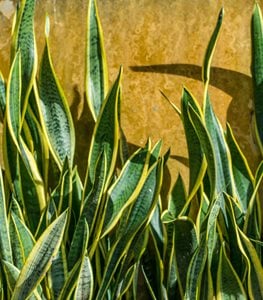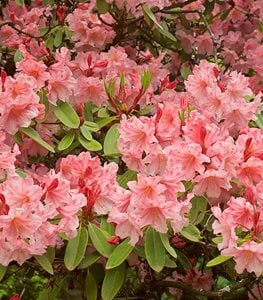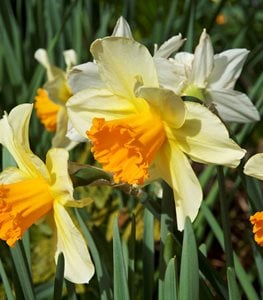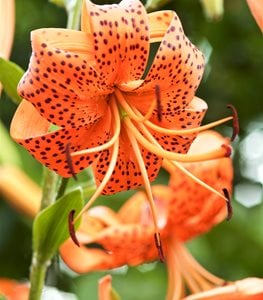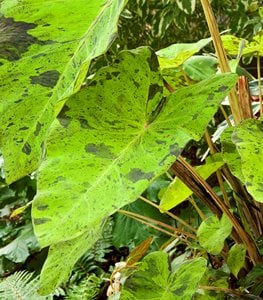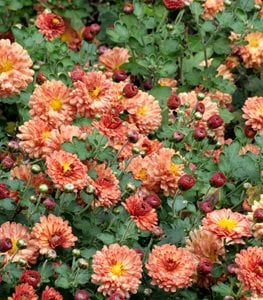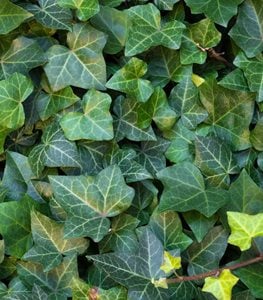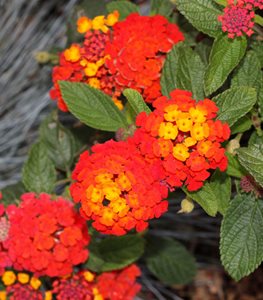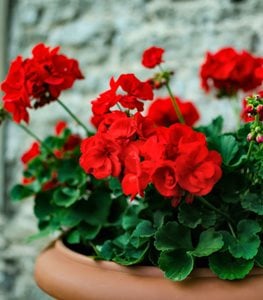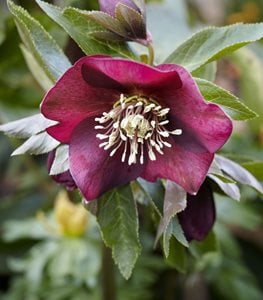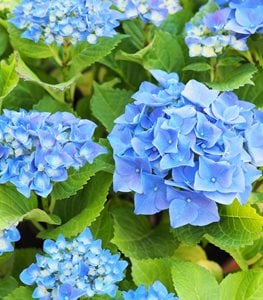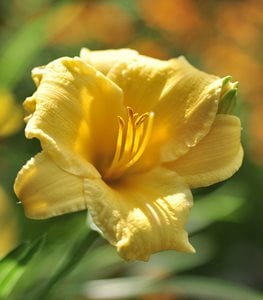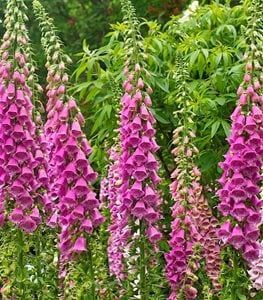COMMON POISONOUS PLANTS FOR DOGS AND CATS
Keep your pets safe by making sure plants in your home and garden will not harm themOne of the biggest responsibilities that pet owners face is keeping their furry friends safe from harm. When it comes to indoor and outdoor plants, there are some that are hazardous to our beloved companions, particularly cats and dogs. While many plants are perfectly safe, others can range from mildly irritating to downright lethal. Here’s a list to get you started on the path to keeping your pets safe.
On this page: Toxic Houseplants | Toxic Outdoor Plants | Additional Tips
Also see: 20 Common Plants Safe for Cats & Dogs
- HOUSEPLANTS POISONOUS TO CATS & DOGS
- OUTDOOR PLANTS POISONOUS TO CATS & DOGS
- ADDITIONAL TIPS & RESOURCES
HOUSEPLANTS POISONOUS TO CATS & DOGS
Growing plants indoors is a great way to incorporate living elements into your home. But, before buying houseplants, research them not just for growing conditions, but whether they’ll be safe for your four-legged friends. Here are some to avoid:
SAGO PALM
Grown for its attractive fronds and unfussy nature, sago palm (Cycas revoluta) is actually a cycad. Despite its elegant appearance, all parts of the plant are extremely poisonous if ingested by pets, with the seeds being the most toxic part of the plant. The toxic principle is cycasin; symptoms include drooling, vomiting, bloody stools, fluid retention in the abdominal area, internal hemorrhaging, jaundice, liver failure, and death. Because of the danger and severity of symptoms, treatment should be sought immediately.
JADE PLANT
Introduced as a houseplant decades ago, jade plant (Crassula ovata) is a succulent grown for its fleshy leaves and sturdy tree-like appearance that lends an exotic appeal. Harmful to dogs and cats if any part of the plant is ingested, the toxic property is unknown. Symptoms, which are generally mild, include vomiting, depression, lack of coordination, lethargy, loss of appetite, and in extreme cases, a slow heart rate or convulsions.
Learn more about jade plants.
AMARYLLIS
A favorite of holiday gift givers, the oversized bulb of amaryllis (Hippeastrum) produces a tall, sturdy stem with large, trumpet-shaped flowers that come in a variety of colors. Other common names include belladonna lily, St. Joseph lily, cape belladonna, and naked lady. Mildly to moderately poisonous to dogs and cats, the toxic principle, lycorine, can cause vomiting, depression, diarrhea, abdominal pain, hypotension, excessive salivation, and tremors. The bulbs are more toxic than the leaves and flowers.
Learn more about amaryllis.
ALOE VERA
Popularized for its many therapeutic uses, aloe (Aloe vera) is a succulent that grows natively in tropical regions worldwide. Cultivated as a houseplant or outdoors in mild climates, Aloe vera is grown for its spiky architectural form and ease of maintenance. The gel extracted from the leaves is primarily used topically as a salve to treat burns. Taken internally, aloe is used to treat a host of other medical issues. Aloe spp contains saponin, a toxin with foaming properties similar to soap that can harm pets if ingested. Symptoms include vomiting, diarrhea, lethargy, changes in urine color, and (rarely) tremors. In most cases, toxicity is mild to moderate, but in extreme cases, ingestion can be life-threatening because of severe dehydration that can result.
WEEPING FIG
A commonly cultivated tree native to Asia and Australia, weeping fig (Ficus benjamina) is grown outdoors in warmer U.S. regions. As a houseplant, it’s grown for its glossy foliage, graceful arching habit, and tolerance of a wide range of growing conditions. Other common names include Benjamin’s fig, Indian rubber plant, and rubber tree. Toxic to both cats and dogs if ingested, the enzyme ficin that occurs in all parts of the plant can destroy proteins in dogs that are needed to repair body tissues. The other poisonous substance, ficusin, can cause photosensitivity, irritating the skin when exposed to the sun. Symptoms include agitation, diarrhea, drooling, loss of appetite, mouth pain, and vomiting. Skin symptoms include redness, blistering, and inflammation. Toxicity is generally mild unless larger quantities are ingested.
PHILODENDRON
For generations, philodendron has been a mainstay of houseplant lovers for its wide tolerance of growing conditions, particularly low light. The most commonly grown, heartleaf philodendron (Philodendron scandens) is one of the easiest of all houseplants, favored for its decorative leaves and vining habit. Also known as sweetheart plant, the leaves can be toxic to cats and dogs if chewed or ingested. The toxic ingredient of calcium oxalate crystals is released upon chewing or biting any parts of the plant. Symptoms include drooling, mouth pain and swelling, decreased appetite, vomiting, and (rarely) constriction of airways. Toxicity is generally mild to moderate.
Read more about how to grow philodendrons.
BEGONIA
Both a popular garden plant and houseplant, begonia (Begonia spp.) is grown for its attractive heart-shaped leaves in a variety of colors and patterns, as well as its decorative flowers. Poisonous to cats and dogs if ingested, the toxic principle is soluble calcium oxalates, which are more concentrated in the underground tubers than the leaves and stems. The effects, which are usually mild, include vomiting, diarrhea, mouth pain, dehydration, difficulty swallowing, loss of appetite, and excessive salivation.
Learn more about begonias.
ZZ PLANT
One of the toughest and most forgiving houseplants is ZZ plant (Zamioculcas zamiifolia), the name abbreviated by the nursery trade for convenience. The shiny fleshy leaves and graceful arching habit hold up well in low light and even thrive on neglect, making this a good choice for those with busy lifestyles. The toxic property of calcium oxalate is mildly to moderately toxic if ingested by pets, causing swelling of the eyes, mucous membranes, or skin. In most cases, these and other possible symptoms of vomiting, stomach ache, and diarrhea should resolve themselves.
Learn more about ZZ plant.
CALLA LILY
Grown both as an indoor and outdoor plant, calla lily (Zantedeschia aethiopica) is best known for its elegant tubular flowers. Dangerous to pets if any parts of the plant are ingested, the active toxin is calcium oxalate crystals. Milder symptoms include a burning sensation in the mouth and throat, drooling, difficulty swallowing, and choking, which can linger up to two weeks. In rare cases when large quantities are ingested, symptoms include vomiting, breathing difficulties, convulsions, renal failure, permanent liver or kidney damage, and even death. The level of toxicity is usually mild to moderate.
Learn more about calla lilies.
KALANCHOE
A mainstay of florist shops and garden centers, kalanchoe (Kalanchoe blossfeldiana) is grown for its brightly colored flowers and attractive scalloped leaves. This tropical succulent is favored by houseplant lovers for its ease of cultivation and tolerance of a wide range of conditions. Other common names include flaming Katy, devil’s backbone, Mexican hat plant and Madagascar widow’s-thrill. All parts of the plant are poisonous to dogs and cats, with the toxic property of glycoside toxins similar to those found in foxglove. In most cases, toxicity is mild to moderate, with symptoms including drooling, vomiting, and diarrhea. In extreme cases, effects can include lethargy, abnormal heart rate, dilated pupils, tremors, and seizures.
DUMB CANE
For a lush, tropical look without a lot of work, dumb cane (Dieffenbachia) lights up even the darkest corner of the house with its white and green variegated leaves. One of the most common houseplants, it also goes by the name leopard lily. However attractive, the plant contains oxalate crystals and other toxic enzymes that cause a burning sensation if the leaves or stems are chewed by pets. Symptoms, which are usually mild to moderate, include drooling, vomiting, mouth pain, decreased appetite, and (rarely) difficulty swallowing or breathing.
Learn more about dumb cane plants.
SNAKE PLANT
Grown for its spearlike variegated leaves and upright appearance, snake plant (Sansevieria trifasciata) is a nearly indestructible houseplant that adds dramatic appeal to any room. Also known as mother-in-law’s tongue, good luck plant, or viper’s bowstring hemp, this African tropical prefers bright indirect light and little water. Poisonous if ingested by pets, the toxic principle is saponin, which has foaming properties similar to soap. Symptoms, which are usually mild to moderate, include drooling, nausea, vomiting, and diarrhea.
OUTDOOR PLANTS POISONOUS TO CATS & DOGS
When choosing plants for your yard, take into consideration whether they’re safe for pets, based in part on your own dog or cat’s behavior. While some pets, particularly certain breeds of dogs, will eat or chew anything, others show no interest. And don’t forget to monitor your furry friends while walking in the neighborhood to make sure they aren’t exposed to something harmful. Here are some plants to avoid:
AZALEA AND RHODODENDRON
A sure sign of spring, azaleas and rhododendrons (Rhododendron spp.) are among the most beloved shrubs for their bell-shaped flowers and attractive evergreen leaves. The beauty of this plant belies its toxicity to cats and dogs if ingested. The poisonous substance present in all parts of the plant is grayanotoxin, which can cause drooling, vomiting, and diarrhea. In more severe cases, effects can include loss of appetite, abdominal pain, abnormal heartbeat, blindness, depression, tremors, and seizures. Toxicity can vary according to the plant variety, ranging from mildly to severely harmful.
Learn more about azaleas and rhododendrons.
SPRING BULBS
Though early bulbs are a welcome sight after a long, dreary winter, some varieties can be harmful to pets. Daffodils, hyacinths, tulips, and iris have different degrees of toxicity, with varying toxic principles and symptoms. The highest level of toxicity is generally found in the bulbs rather than plants. Before buying any new varieties, familiarize yourself with each kind to make sure they are safe. Keep unplanted bulbs out of reach of pets and recognize possible symptoms if you suspect your pet has ingested any part of a particular plant.
LILY
Some of the most beloved summer flowers, lilies are grown from bulbs, producing dramatic tubular flowers in an endless array of colors and patterns. These beauties can be harmful to pets, depending on the variety. Calla, peach, and Peruvian lilies are less toxic, causing mild symptoms such as drooling or mouth irritation if the plant or bulb are ingested. Others, such as Asiatic, Easter, and tiger lilies are more harmful, with the toxic property being present in all parts of the plant, but concentrated most in the bulbs. Since dogs in particular are known to dig them out of the ground, it’s recommended that bulbs be kept out of reach of their inquisitive paws. Even the pollen or water from a vase can cause poisoning, particularly for cats. Eating just one bulb can result in severe intestinal upset; symptoms include diarrhea, dehydration, drooling, vomiting, and lethargy. In extreme cases, pets can suffer a distended abdomen, jaundice, shock, cardiac imbalance, organ failure, and death.
Learn more about lilies.
ELEPHANT'S EAR
There are several garden plants that go by the name of elephant's ear (Caladium, Alocasia, Colocasia), which are grown for their large, bold leaves that can measure up to 3 feet long. These tropicals, which were popularized during Victorian times, come in various forms and colors, lending an exotic feel to the landscape. All are poisonous to cats and dogs, with the toxic property of calcium oxalate crystals being most concentrated in the bulbs. Symptoms include burning sensation of the mouth and throat, drooling, and vomiting. In extreme cases where larger quantities are ingested, effects can include difficulty swallowing and breathing, convulsions, organ damage, and death.
Learn more about elephant's ear.
CHRYSANTHEMUM
A sure sign of fall is when garden mums (Chrysanthemum) begin appearing in grocery stores and garden centers. These reliable perennials, which were originally cultivated hundreds of years ago in China, are grown for their long-blooming flowers that come in a rainbow of colors and forms. All parts of the plant are poisonous to pets if ingested, with the toxic principle being pyrethrin, a natural insecticide that repels pests. Symptoms include vomiting, diarrhea, excessive salivation, coughing, appetite loss, agitation, and lack of coordination. Particularly for cats, sensitivity can result in dermatitis through skin contact. Toxicity is generally mild to moderate.
Learn more about chrysanthemums.
ENGLISH IVY
A commonly used groundcover, English ivy (Hedera helix) is grown for its ability to cover large areas quickly and is often used to soften the look of stone walls. Also grown as a houseplant, the overuse of this popular vine outdoors has resulted in invasiveness in some regions. Poisonous to cats and dogs if leaves or berries are eaten, there are multiple toxic principles that can make your pet sick. Symptoms include a burning sensation in the mouth and throat, drooling, excessive thirst, stomach upset, vomiting, diarrhea, and abdominal pain. Skin contact with the sap can cause dermatitis. Toxicity is generally moderate, but in rare cases where larger amounts are ingested, effects can include loss of coordination, disorientation, convulsions, and coma.
LANTANA
Grown for its exceptionally long bloom time and cheerful bright-colored flowers, lantana provides months of continuous color during warmer weather. All parts of the plant are poisonous to pets, with the toxic principle of triterpenoid being most concentrated in the berries. Poisoning is more common in southern regions where lantana grows wild. The pungent smell of the leaves generally repels animals, but curious pets might be inclined to taste it. This plant can be dangerous if ingested in larger quantities, so immediate treatment is essential. Symptoms include vomiting, diarrhea, appetite loss, and excessive urination. More serious effects can include jaundice, abdomen distention, and liver damage.
Learn more about lantana.
ZONAL GERANIUM
Zonal geraniums (Pelargonium) are a favorite potted or bedding plant for their brightly colored flowers that bloom over an exceptionally long time in summer and fall. While perennial cranesbill geraniums (Geranium spp.) are not harmful to pets, the annual pelargoniums are. Also known as common geraniums, the toxic principles of geraniol and linalool-used in essential oils and natural insect repellents-can be poisonous to pets if ingested. Symptoms include vomiting, loss of appetite, lethargy, depression, and slower metabolism. Skin contact can cause dermatitis. Toxicity is generally mild to moderate, depending on the amount ingested.
Learn more about Pelargoniums (common geraniums).
HELLEBORE
For winter color in the garden, some of the earliest flowers to bloom are hellebores (Helleborus spp.). Also known as Lenten rose, Easter rose, or Christmas rose, these tough perennials are prized for their leathery evergreen foliage and cup-shaped blooms that come in an array of colors and patterns. Hellebores produce several toxic principles that are harmful to pets if any part of the plant is ingested. In most cases, the bitter taste will deter pets, so reactions tend to be mild, and severe cases of poisoning are unusual. Symptoms include colic, depression, diarrhea, drooling, abdominal pain, vomiting, and lethargy. In extreme cases, effects can include breathing difficulties, paralysis, seizures, heart arrhythmia, and (rarely) death.
Learn more about hellebores.
HYDRANGEA
One of the most beloved summer-blooming shrubs, hydrangea (Hydrangea spp.) is grown for its spectacular flowers that occur in a variety of colors and shapes. Unfortunately, the leaves and flower buds can be harmful to dogs and cats if eaten, with the toxic principle being cyanogenic glycoside, also known as cyanide. Symptoms include vomiting, diarrhea, abdominal discomfort, and depression. Since pets generally find the plants unpalatable due to the bitter taste, cyanide intoxication is rare. Serious effects can include seizures, breathing issues, an increase in heart rate and body temperature, and death.
Learn more about hydrangeas.
DAYLILY
With the ability to grow in most zones and flowers that come in an endless array of colors, it’s no wonder that daylilies (Hemerocallis spp.) are one of the most popular garden perennials. Though daylilies are not regarded as highly toxic to dogs, they can still cause mild abdominal discomfort if any parts of the plant are ingested in significant quantities. For cats, daylilies are far more dangerous. Felines with extreme sensitivity can fall ill simply by grooming their fur after coming into contact with the plant, or by drinking water from a vase that contains cut daylily flowers. Early symptoms can include vomiting, lack of appetite, dehydration, and lethargy. If not treated immediately, effects can worsen, including disorientation, kidney failure, seizures, heart arrhythmia, and death.
Learn more about daylilies.
FOXGLOVE
The tall flower spires of foxglove (Digitalis spp.) are a welcome sight in the garden come spring and summer. A favorite in English cottage-style gardens, the attractive bell-shaped flowers make a welcome addition to any flower border. These biennial or perennial flowers are highly poisonous to pets if ingested, containing the toxic property of cardiac glycosides that can affect the heart. Pets can become sick just by drinking water out of a vase containing cut foxgloves. Symptoms include drooling, nausea, vomiting, weakness, dilated pupils, tremors, abnormal heart rate, seizures, and death. Because effects are severe and often fatal, it’s essential to seek medical treatment immediately.
Learn more about foxglove.
ADDITIONAL TIPS
Make sure to know the botanical name as well as common names of plants, as some go by the same common name.
Keep contact information for your regular veterinarian and local emergency vet clinic handy.
When possible, take a picture or bring a sample of the suspected poisonous plant to your veterinarian for positive identification, which will assist in rendering the appropriate treatment.
If you believe your dog or cat has ingested a poisonous plant, call these 24-hour resources for immediate advice:
- ASPCA Animal Poison Control Center: (888) 426-4435 (a consultation fee may apply)
- 24/7 Animal Poison Control Center: (855) 764-7661
- Or your regular vet or local emergency clinic
Seek professional advice immediately, as delaying treatment can result in worsening symptoms or even death.
For a more comprehensive plant list, see the ASPCA Toxic and Non-Toxic Plants List.
See more: 12 Poisonous and Notorious Plants.
